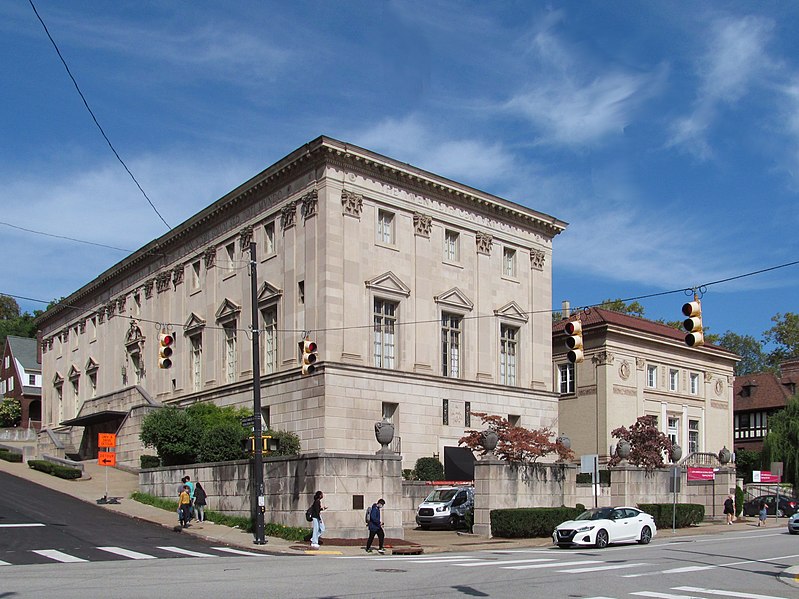
Look for them on the Fifth Avenue front of St. Paul’s Cathedral in Oakland.


Two great cultural institutions that vacated their landmark buildings for different reasons. The Twentieth Century Club, Pittsburgh’s premier women’s club, fell on hard times like most clubs in our antisocial twenty-first century. The Historical Society of Western Pennsylvania, on the other hand, prospered and moved its collection to the Heinz History Center in the Strip. Old Pa Pitt is delighted to see that the old Historical Society building will soon be a Latin American Cultural Center, so that once again it will be a cultural landmark in Oakland.

The Twentieth Century Club was designed by the prolific Benno Janssen.

The Historical Society of Western Pennsylvania was by the firm of Ingham and Boyd.

The story told by architectural historian Franklin Toker is that the architect Henry Hornbostel wanted this building to face Fifth Avenue, with a long vista back from the street, but the clients insisted that it had to face Bigelow Boulevard. Reluctantly Hornbostel acquiesced—and then built it his way anyway. What are you going to do? Tear it down and do it over?

This is one of a number of buildings in Pittsburgh inspired by the Mausoleum at Halicarnassus, and this is the one that most obviously follows its model.

The top of the tower portion of Presbyterian Hospital is one of several buildings in Pittsburgh inspired by the Mausoleum at Halicarnassus. This one belongs to the sub-style that Father Pitt calls Mausoleum-on-a-Stick: skyscrapers where the echo of the Mausoleum is at the top of the tower. Two of those in Pittsburgh are hospitals (Allegheny General is the other), and Old Pa Pitt would be delighted to know why “hospital” seems so likely to make architects think “Mausoleum.”

This splendid apartment house on Bigelow Boulevard is a feast of Art Deco details; in fact, in a city that never adopted Art Deco as enthusiastically as many of its rivals, this is one of the most remarkable Art Deco buildings. Like many other apartment blocks in Oakland, it required some cleverness from the architect to adapt it to an unpromisingly irregular site.



Addendum: According to a city survey of historic buildings, the architect was Edward Stanton, and the building was put up in 1937.